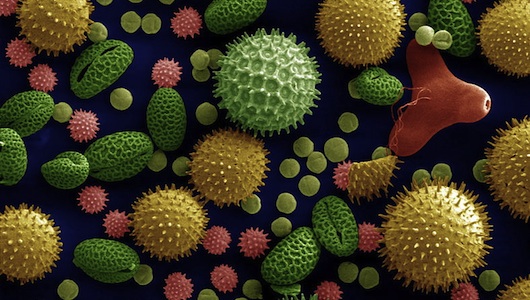Your Monthly Check-Up: Attacking Your Allergy Symptoms

Spring is in the air, but for some people, that can only mean one thing – the onset of allergy season. Also known as “hay fever,” allergies affect about 40 to 50 million people in the US, according to an article in “Healthy Living Made Simple” titled “Harnessing Hay Fever” by Dr. James L. Sublett.
Generally occurring anywhere from early spring to fall, allergies come with a host of unpleasant symptoms, including sneezing, itchy, watery eyes, runny nose, congestion and scratchy throat. These symptoms occur due to pollens from trees and grass, weeds and mold allergens, as well as household nuisances such as dust mites, animals and various vermin.
According to Dr. Sublett’s article, allergies are triggered as an immune system response to genetically predisposed allergens and can occur at any age. While it’s a myth that children can outgrow allergies, it is true that allergies can develop later in life after years of being allergy-free. If you are one of these late allergy bloomers, you may mistake your symptoms for the common cold, as they are similar. But, according to Dr. Sublett, a cold will start off pretty minor, peak at around day four and work its way through your system by about day seven to 10. Unfortunately, we’re all familiar with the common cold.
Managing allergy symptoms is like a 3-legged stool, according to Dr. Sublett – education about avoiding what you are allergic to, effective medications and allergy shots. Since only a small percentage of allergy sufferers find adequate relief from over-the-counter drugs, it’s best to schedule an appointment with an allergist or immunologist, especially if you suffer from moderate to severe allergy symptoms. Once a proper diagnosis is reached, the specialist can then recommend an appropriate course of treatment.
Whether your allergies are severe, mild or non-existent, improving the quality of your indoor air is a great step toward reducing allergy symptoms. Dr. Sublett outlines 10 things you can do right now to improve your air quality:
- No smoking inside the house
- Measure indoor humidity and keep it below 50 percent. Do not use vaporizers or humidifiers – in fact, you may need a dehumidifier. Vent fans in bathrooms help remove moisture and repair water leaks.
- Remove wall-to-wall carpet from bedroom. Use a central vacuum with HEPA filter regularly.
- Wear an N95 particulate mask when vacuuming, sweeping or doing yard work (CDC NIOSH-rated).
- Keep pets out of the bedroom and use a HEPA Air Cleaner with an adequate Clean Air Deliver Rate (CADR).
- Put mite-proof covers on your mattress and pillows and wash bedding weekly with hot water.
- Install a MERV11 or 12 disposable high-efficiency media filter in the furnace and AC system and change the filter every one to three months
- Leave a fan on to create “whole-house” air filtration
- Have your heating and AC units inspected and serviced every six months
- Vent gas appliances and fireplaces to the outside and maintain regularly
With just a few simple household changes and a trip to the doctor, you can spend this allergy season breathing easier than ever before. Read Dr. Sublett’s full article here and check out Hinda’s assortment of fans, HEPA vacuums and air purifiers!
